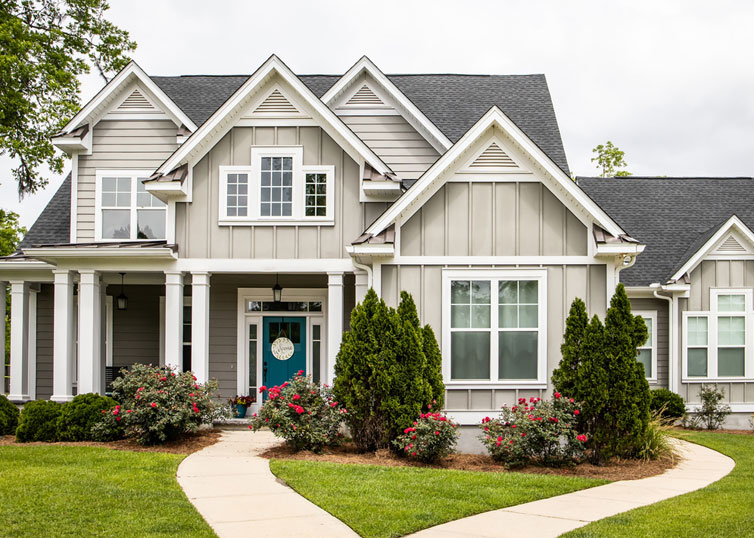 Ever since Fannie Mae and Freddie Mac (the GSEs) created the Uniform Appraisal Dataset (UAD) several years ago, real estate appraisers must rate building quality on a standardized scale from Q1 (best) to Q6 (worst). If you are performing appraisals for the intended use of secondary market mortgage lending, it’s essential to have a clear understanding of the UAD quality ratings, since you will be required to use them in your report forms.
Ever since Fannie Mae and Freddie Mac (the GSEs) created the Uniform Appraisal Dataset (UAD) several years ago, real estate appraisers must rate building quality on a standardized scale from Q1 (best) to Q6 (worst). If you are performing appraisals for the intended use of secondary market mortgage lending, it’s essential to have a clear understanding of the UAD quality ratings, since you will be required to use them in your report forms.
The GSEs have established specific definitions for Q1 through Q6. It is important to note that these ratings are absolute, not relative. In other words, the quality of the other houses in the local market does not matter when applying these ratings. A house that is rated as a Q1 in Raleigh NC would also be rated as a Q1 in Nantucket, Miami, Minneapolis, Dallas, Seattle, San Diego, and everywhere in between.
Learn about the entire home construction process from the ground up. Enroll in our top-rated CE course: Residential Construction and the Appraiser.
Breakdown of UAD quality ratings Q1–Q6
Here are our translations of each UAD quality rating, Q1 through Q6. For the specific definitions established by the GSEs, please refer to UAD Appendix D: Field-Specific Standardization Requirements found on Freddie Mac’s website.
Q1: A Q1 dwelling is the best of the best. The interior and exterior materials and finishes are top quality, with lots of imported materials and high-quality ornamentation. Items like mahogany flooring and woodwork, imported tile, multiple custom kitchens and bathrooms would be indicative of a Q1 dwelling. In many communities, there are no Q1 houses. Conversely, in communities like Beverly Hills or Malibu, a significant number of houses might be Q1.
Q2: A Q2 dwelling is still a high-quality house. This type of house is typically custom-designed for an owner’s site, but could be found in a high-quality tract development. In some locations where there are no Q1 houses, a Q2 dwelling might represent the best quality house in the area. Good quality trim and woodwork, hardwood and tile flooring, custom-designed kitchens and bathrooms, masonry exterior, etc. would be the hallmarks of a Q2 house.
Q3: A Q3 house is still good quality, although not as consistently high as a Q2. Perhaps the kitchen is “semi-custom,” or the exterior siding is mostly vinyl with very little masonry. Interior flooring might be a mixture of ceramic tile and mid-grade carpeting.
Q4: This is a standard “builder-grade” house. The dwelling meets or exceeds code requirements, but the quality of the materials is similar to what can be purchased at a local “big box” home center. There might be some simple upgrades like a tiled shower stall or a ceramic backsplash or quartz countertops in the kitchen.
Q5: These houses meet building codes and are livable dwellings. They are not substandard or defective in any way. They meet the basic needs for housing, with low-cost carpet, vinyl flooring, painted wood or veneer cabinets, basic fixtures, laminate countertops, fiberglass or plastic tub or shower units, etc.
Q6: These are the lowest quality structures. Some might not even be suitable for year-round habitation. Not all Q6 dwellings can be characterized as “shacks,” but a shack would likely be rated as a Q6. Many of these dwellings were constructed prior to the advent of building codes. Some were constructed by the property owner (i.e., not a professional contractor.) Like Q1 dwellings, Q6 dwellings do not exist in every market.
Problems with quality ratings
Fannie and Freddie have tried to standardize the quality ratings by providing specific definitions for quality and making them absolute (as opposed to relative). However, there are houses that simply defy categorization.
For example, let’s say you are appraising a standard Colonial-style two-story house with an attached family room on the left side and a two-car attached garage on the right side. The interior finish is standard builder-grade materials, standard trim and ornamentation, with a few upgrades. It would likely be considered a Q4, but…the buyers are professional chefs, and they had a restaurant-grade kitchen installed with stainless steel and granite surfaces, high-quality cabinetry and fixtures, and commercial-grade appliances including a walk-in freezer. Would this high-end kitchen alone be capable of raising this house from a Q4 to a Q3? If you asked ten different appraisers this question, it is possible that five of them would rate this as a Q3, and the other five would still rate it as a Q4.
The point of this example? Be familiar with the quality rating definitions and have supportable and defensible reasons why you chose the rating you did. As an appraiser, being able to defend your choices is an essential skill, and understanding residential construction is important in applying these UAD quality ratings.
Want to gain a deeper understanding of how homes are built? Enroll in our top-rated CE course: Residential Construction and the Appraiser.
The post Understanding UAD Quality Ratings appeared first on McKissock Learning.









